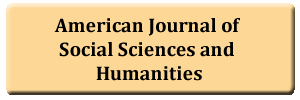Guided-blended collaborative learning in speaking class: Voices of non-native English teachers and students from eastern Indonesia
DOI:
https://doi.org/10.55284/ajel.v8i1.890Keywords:
Collaborative-learning, Guided-blended, Indonesia, Perception, Role-based, Speaking, Technology.Abstract
The purpose of this qualitative study is to explore and address two important questions from ten qualified non-native English teachers and five students who have been actively involved as research participants: (1) how non-native English teachers help students improve their English speaking performance through guided-blended collaborative learning, and (2) how non-native English teachers and students view guided-blended collaborative learning as a way of improving students’ English speaking performance. Based on an in-depth interview with five students and an analysis of documents, it is clear that when teachers gave their students both synchronous and asynchronous feedback, the students' speaking skills improved. The data that has been analyzed thematically showed that collaborative learning is successful and should be utilized to teach speaking English as a foreign language, they found, teachers should use the following strategies when teaching GBCL: 1) Mixing synchronous and asynchronous learning; 2) Being guided or controlled by the teachers; 3) Forming groups based on roles; 4) Peer tutoring and evaluation; and 5) Collaborative integrated tasks with technology. In addition, we would like future studies to use real experimental and control class designs to conduct guided blended collaborative learning.



